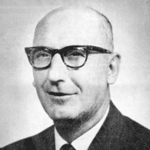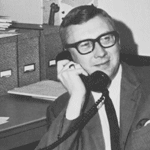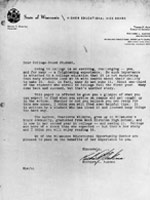| Jon Guiles, Herb Gaede, and Don Jorgenson discuss efforts WSU-O made to recruit black students. - 580k mp3 | |
| Racine natives Robert Cockroft and Robert Hayes relate their experience as some of the Þrst black students on campus. 46k mp3 |
Please click a thumbnail for more detail.

WSU-O football coach Russ Young.
Photo by The Quiver.

A former high school coach and counselor, Don Jorgenson earned a Ph.D. in student personal services before coming to WSU-O. As registrar and the head of the ad hoc Committee for the Culturally Distinct, Jorgenson would play a major role negotiating the experience of black students on the WSU-O campus.
Photo by The Quiver.

Methodist minister and civil rights advocate Richard Aukema administered the Milwaukee Educational
Opportunity Board's storefront office in Milwaukee's Inner Core. To a much greater extent than regularly-appointed high school counselors,
Aukema encouraged local black youth to attend college in the state of Wisconsin. Courtesy of Wisconsin Historical Society."
The open housing debate that erupted in Oshkosh during the summer of 1968 exposed the fault lines dividing the citizens of Northeast Wisconsin (and many other Americans) on matters of race. The young black students who enrolled at WSU-Oshkosh in record numbers in September knew little of the racial tensions that gripped the city a month prior to their arrival.
Growing up in Milwaukee, Racine, Chicago and a few other cities within a several hundred mile radius, these students were certainly not immune from the racial crises that gripped the United States in the 1960s. Significantly, more than a few of these students were active participants in the civil rights battles waged in their hometowns. But by moving to Oshkosh and enrolling in WSU-O—with financial assistance provided by state programs and the Higher Education Act, part of President Lyndon Johnson’s liberal Great Society program—they did not expect to be drawn into new racial turmoil.
In the fall of 1968, the enrollment African American students at WSU-O reached 116. This marked a significant increase from the previous year’s enrollment (77) and the enrollment of the 1964-1965 school year (14), when WSU-O initiated its recruitment of black students. Who were these students? Like members of the white student body, they came from a diversity of backgrounds and differed markedly in their political beliefs, their academic interests and lifetime goals. But they also shared much in common. In order to appreciate these differences and commonalities, consider the following capsule profiles of Geoff and Sandra McCreary, Henry Brown III, and Vada Harris.
